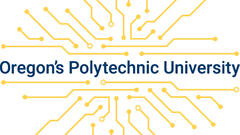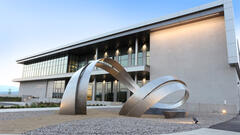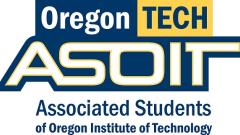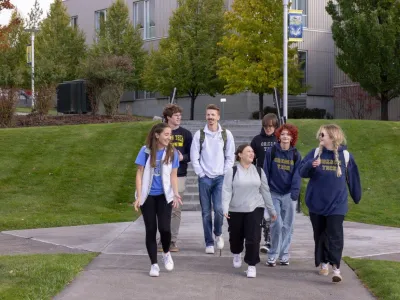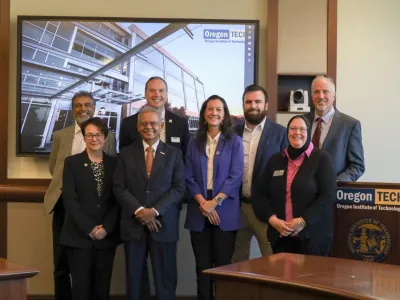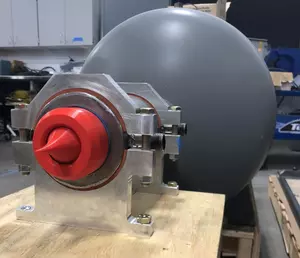
Oregon Tech’s Rocketry and Aerospace (OTRA) club, supported in part through an Oregon NASA Space Grant Consortium (OSGC) grant, moves forward with hands-on fabrication and testing of an aerospike—a propulsion system for aircrafts, rockets and satellite launch vehicles.
While many people may be familiar with the bell-shaped nozzle traditionally used for the engine on rockets or planes, aerospike engines offer the advantage of less mass and lower fuel consumption. With the growing demand for Earth observation and space exploration, the market for this will only increase.
Aerospikes respond to lower atmosphere by allowing the flow to open up, allowing faster flow speeds, and achieving efficiency to go faster at higher altitudes - automatically. But these aerospikes are of less efficiency if they cannot be as controlled at different altitude conditions. Maneuvering the vehicle through differential thrust vectoring—forcing gas to flow along the outside of a spike—eliminates the need for the heavy gimbals and actuators used to vary the direction of traditional nozzles, furthering mass, size and reliability savings. The thrust vectoring is especially useful for rockets and missiles, allowing them to bank harder.
“You have to see how the vehicle is going to perform if you suddenly partially starve the aerospike on one side,” explains Mechanical Engineering student Brandon Foose. “That's the frustrating part. And that's hopefully what we're trying to figure out if we can see how the shape of aerospike is going to be affected when we start centering to one side or another.”
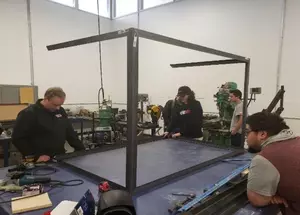
The research can apply to anything that goes through different variable pressures and needs to compensate for those variable pressures as you go up in altitude—from military aircraft or even spaceships trying to go to space.
The research began in 2019 by Brandon, now a senior, who was soon joined by Noah Cayson. In 2020, the two were awarded an OSGC undergraduate team experience award to begin testing. After Noah graduated, Brandon took on the role of student adviser for the new team of Mechanical Engineering students Oberon Fayland, Tyler Padron and Kiet Lam. Continuing the research, Kiet is spearheading the low-pressure chamber effort, Oberon is working on improving the slider and schlieren photography system, and Tyler is working on refining the aerospike geometry to better suit their test needs.
In tackling such a vast project, the students gain experience with systems and disciplines not available in a typical course structure.
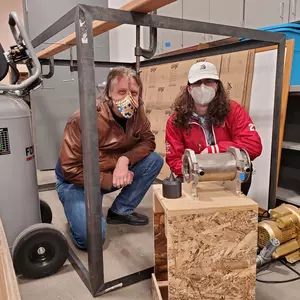
“The aerospike endeavor is attempting research that was given up by grad students elsewhere—all on a shoestring budget,” said Sean Sloan, associate professor of Mechanical Engineering at Oregon Tech and faculty adviser. “And we're expanding upon a multiyear master's thesis done at Cal Poly, which had way more resources, and we’re doing it on a quarter of the budget.”
“Overall, the CTV Toroidal Aerospike Team was able to accomplish many things the team set out to do,” said Brandon. “More importantly than what was accomplished, the team was able to gain valuable, hands-on experience in an aerospace related project that otherwise likely wouldn’t have happened.”
Throughout the next year, the team will continue building a low-pressure chamber designed to test the aerospikes at two different pressures to verify the altitude compensating characteristics of the nozzle. The nozzles are cold fired with compressed air, with a schlieren system developed and tested to record and then analyze the results. Next up for the team is to finish a test fire of the traditional aerospike, before proceeding to integrating and testing the thrust vectoring nozzle. Once sufficient testing is completed on the nozzle, future project teams could work toward a hot-fire and possibly even integrating the rocket engine onto a rocket.

